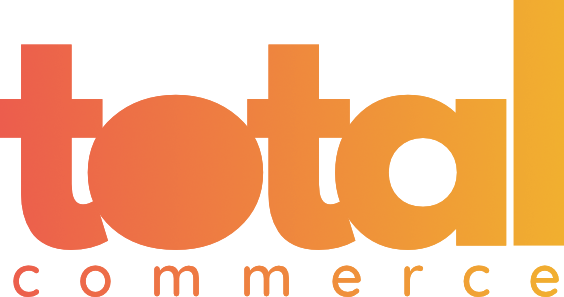Tariffs aren’t just back—they’re biting. Or are they? At time of writing there could be tariffs, but there also could not, or there could be tariffs in 90 days. While the uncertainty affects all business decisions, for those in the eCommerce market, it’s a particularly trying time. For many eCommerce businesses, that means tough choices ahead.
With new waves of trade restrictions and duties on imported goods, many brands are seeing cost-of-goods-sold jump practically overnight. The result? Squeezed margins, rising prices, and a need for rapid, strategic adjustments. But while the pressure is real, this moment also presents an opportunity: to revisit your pricing model, sharpen your profit levers, and emerge more resilient than before.
Let’s break it down—how tariffs are impacting your business and what you can do to adapt.
What Tariffs Are Doing to eCommerce Right Now
Nobody knows exactly how this will all play out—and that’s part of the challenge. The tariff landscape is shifting, negotiations are ongoing, and different brands will feel the impact at different times depending on their inventory cycles, sourcing strategies, and customer base.
But while the details are still in flux, the broader picture is pretty clear: costs are rising, and the pressure on margins is real. What we’re outlining here isn’t a crystal ball forecast—it’s a grounded, logical response to what’s unfolding and what eCommerce brands on Shopify can reasonably expect in the months ahead.
1. Higher COGS, Lower Margins (Unless You Act)
Tariffs are essentially taxes on imports. If your products are sourced from affected countries—especially China—expect your landed costs to rise, fast. This eats directly into your profit unless you find a way to offset it.
2. It’s Inflationary by Nature
Tariffs don’t just hit one link in the supply chain—they ripple all the way through. That means suppliers, manufacturers, and freight providers are all likely to pass costs downstream. Spoiler: that’s you.
3. Inventory Timing Matters
If you’re sitting on pre-tariff stock, you’re in a golden window. Use it wisely. Once that runs out, your new cost structure kicks in—so use this moment to drive profit or price testing.
What You Can Do About It—Now
This is where tactical thinking pays off. These aren't just survival strategies—they're smart pricing moves you should probably be doing anyway, tariffs or not.
1. Run a 90/10 Price Test
Raise prices—but don’t go in blind. Run a 90/10 holdback test:
- Raise prices for 90% of your audience
- Keep prices the same for 10% to measure elasticity
That way, you start generating extra margin now while collecting valuable data on how your customers actually respond.
2. Take a Portfolio Approach to Pricing
Don’t raise prices across the board. Some products have more pricing power than others.
- High-margin, low-price-sensitive items? Raise away.
- Commoditized, high-competition SKUs? Be more cautious.
Think like an investor: diversify your pricing moves based on product elasticity.
3. Test Multiple Price Points
Elasticity isn’t linear.
- A jump from $27 to $30 might have no impact.
- But $27 to $35 could kill conversion.
Test different increments. Test psychological pricing (e.g., $29.99 vs. $30). Every dollar matters.
4. Run COGS-Based Scenarios
Map out best-case and worst-case tariff scenarios.
- What happens if tariffs rise again?
- What if they’re reduced?
Use this to forecast how much you’d need to raise prices (or cut costs) to preserve margin.
5. Test Monthly—Not Just Once
Don’t try to “nail it” in one go. The global trade environment is in constant flux. So are consumer expectations.
Set up a system to evaluate pricing, conversion, and margins on a rolling basis—monthly if you can swing it.
6. Explore Shipping as a Profit Lever
Free shipping might need to go. Tariffs add hard costs—shipping is a way to claw some of it back without touching item prices.
Try:
- Adjusting free shipping thresholds
- Testing flat-rate shipping
- Charging shipping fees on tariff-heavy products only
It’s less visible than a price hike and easier to reverse if needed.
7. Reevaluate Discounts and Offers
Discounts are often habitual, not strategic. Now’s the time to ask: are they actually driving incremental sales?
Use tests to validate:
- Whether % off is better than $ off (the “Rule of 100” can help here)
- If bundling or minimum order value thresholds convert better
- What promos work without eroding margin
8. Be Transparent with Customers
This is a moment to earn trust, not hide from reality.
- Add site messaging or a banner explaining pricing changes
- Consider showing tariff line items at checkout
- Educate your audience—they get it, inflation is everywhere
Transparency builds loyalty, even when prices go up.
9. Send the Email
A direct, respectful note to your customers explaining the why behind price changes can:
- Drive urgency (they’ll want to buy before the hike hits)
- Soften the blow
- Position your brand as honest and value-driven
This is also a chance to clear older inventory and build cash reserves.
10. Don’t Wait for Perfect. Move.
Some brands hesitate to change prices because they want to “get it right” the first time. Don’t fall into that trap.
This isn’t a one-and-done situation. It’s dynamic.
Better to act with good-enough data today than chase perfection tomorrow.
Tariffs Are the Pressure Test—Pass It.
This isn’t just another cost challenge. Tariffs—especially in 2025—are a structural shift in how global commerce works. The brands that survive will be the ones that respond, not just react.
Take the time to zoom out, run the numbers, and make bold but informed moves. Yes, this is hard. But it’s also a moment to strengthen your pricing engine, sharpen your strategy, and build deeper customer trust.
You’ve got this. And if you come out stronger on the other side? You’ll be unstoppable.
Need help simulating price sensitivity or building tariff-proof strategies on your Shopify store? Tools like Intelligems, pricing optimization tools like Prisync, and transparent checkout apps are your friend right now.
Let’s turn this headwind into momentum.




